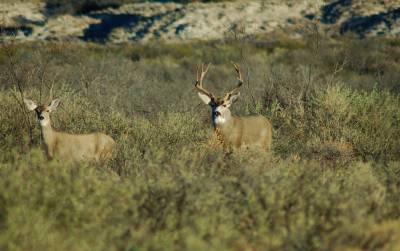
Operating a successful scouting service for 18 years has brought me into contact with thousands of hunters. I’m still surprised when someone needles me for the secret “spot” that no one knows about. That is so 1980’s! The information age has leveled the playing field. A hunter in Rhode Island can get the same information as the resident living in the unit. Besides, it’s not the “spot” but how you hunt it, but that’s a different blog.
I did an internship for my degree in the mid 90’s. I worked a day-a-week in an Idaho Fish and Game office for a spring semester when hunters are actively researching hunts. Every day, I’d hear the biologists on the phone telling hunters virtually the same information as the last ten callers. Some of these calls were downright hilarious as hunters pried for secret spots, offered money and trades, and even asked where the biologist hunts! Trust me; he’s likely telling you everything he knows. If he does have a secret spot, he’s hunting it himself and won’t tell anyone.
I still call biologists for information but I’m not looking for hotspots. If they mention a place to hunt, I note it but also remember that they will likely tell a dozen other hunters the same information every year. There are a few numbers I’m interested in and always ask for them. Because I’m looking for older, bigger deer, I’m less concerned about success rates (high success rates usually equates to hunter crowding) and total population (huge bucks can come from low populations of deer). Instead, I always ask two things:
1) Is there is a measure of mature bucks in the harvest?
2) What is the post-hunt buck-to-doe ratio?
Number one is not widely publicized for deer, especially on general seasons. Typically, that number is reserved for horned animals like sheep, but some states do measure it for deer and other antlered animals. A quick survey of the web only brought up Idaho and Nevada showing those numbers, but I’ve found biologists who measure it one way or another. If he knows what it is, he will usually be glad to tell you. It’s like a badge of honor to him.
Idaho tracks percent of 4-points and 5-points in the harvest. I’ve learned over many years that if you can find an area that has around 40% of the harvest as 4-point bucks, the unit will have enough older, mature deer to make it worth a try. Limited draw hunts in good units will often exceed 80%, but I think that is partly because hunters in draw units are pickier.
Buck-to-doe ratio is also a telling number. With higher ratios, there are just plain more bucks in the population and a better chance they’ll reach maturity. However, it doesn’t have to be high to produce great bucks.
Idaho manages for a minimum of 15 bucks per 100 does in general seasons. Most of our units exceed that number. I’ve seen huge bucks in units with as low as 15, but I’d rather hunt where there are 20-35 bucks per 100 does. Keep in mind, though, that the higher the ratio, typically the harder it is to get a tag.
At last check, Utah was managing at around 18, while Colorado often measures 30-40 in units where license are easy to obtain. I hunted a Colorado unit this year that posts around 30 bucks per 100 does and had no problem finding mature bucks. Killing one was a different story.
Question: What information are you finding most helpful when you talk to biologists?




















Great article Robby, its neat that you have seen it from both sides. I always try to ask about what kind of feed is in the area and most of the time have been fortunate with how accurate the biologists are.
Thanks Cody. I think biologists, especially seasoned ones, are a wealth of info even beyond hotspots.
Robby,
First of all let me say I found this site by accident and impressed with the information. I am a mule deer nut and am refining my application strategy and have found that if you spend time chasing the “hot unit” you are too late. Most folks think that a certain amount of points guarantee a certain type of deer which is simply not true. Points do not guarantee anything. It is also clear that people do not understand the actual odds of drawing certain tags. I speak to people all the time who are waiting for that certain tag that mathmatically will not happen for at least 50 years. One thing is sure, you can’t kill a 200 inch mule deer from your couch. Keep up the good work,
Rich
Rich, good to have you and your comments capture the essence of these “Application Strategy” blogs. You are spot-on about “hot” units- by the time they get hot, it’s too late!
Comments are closed.